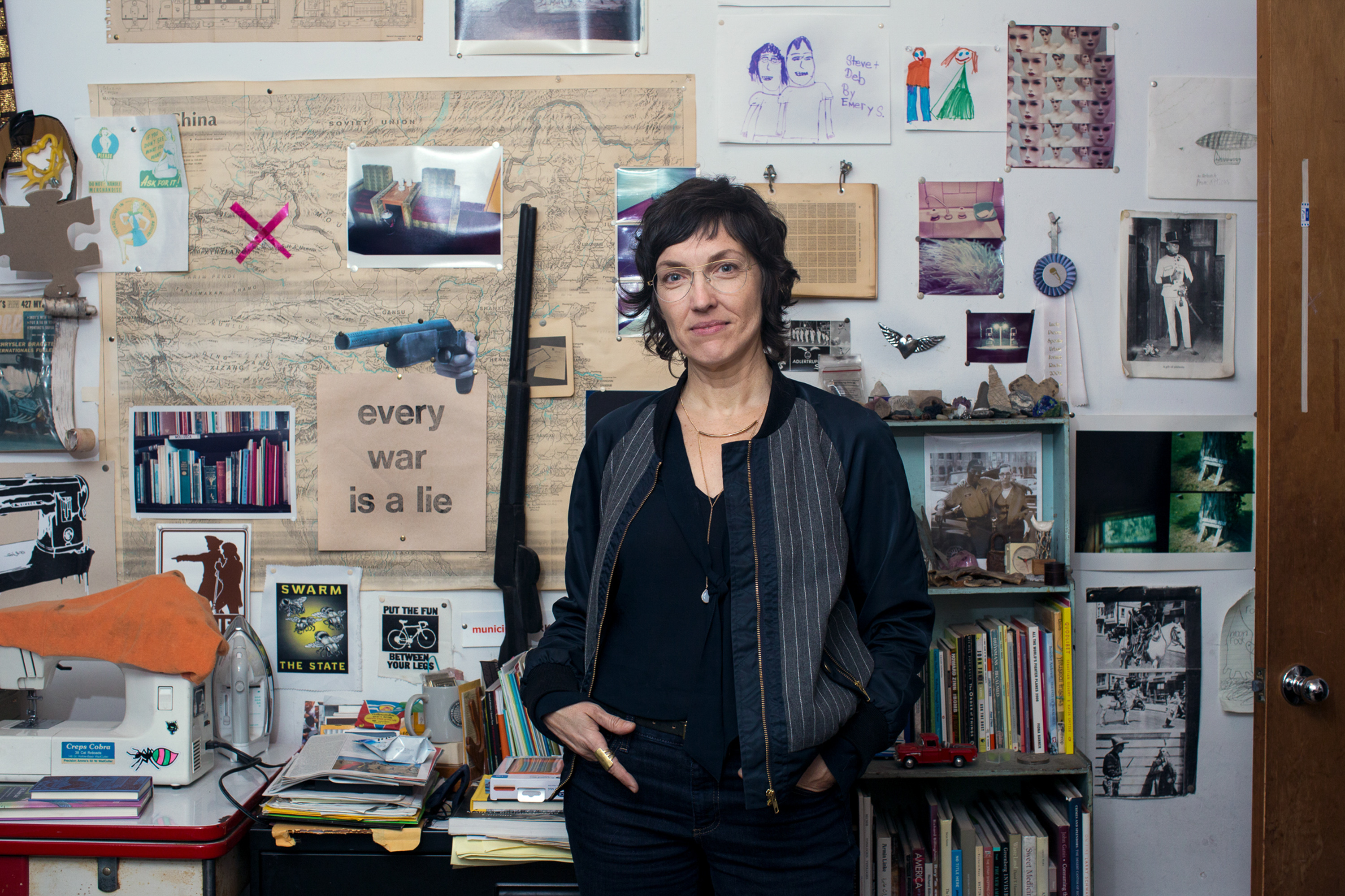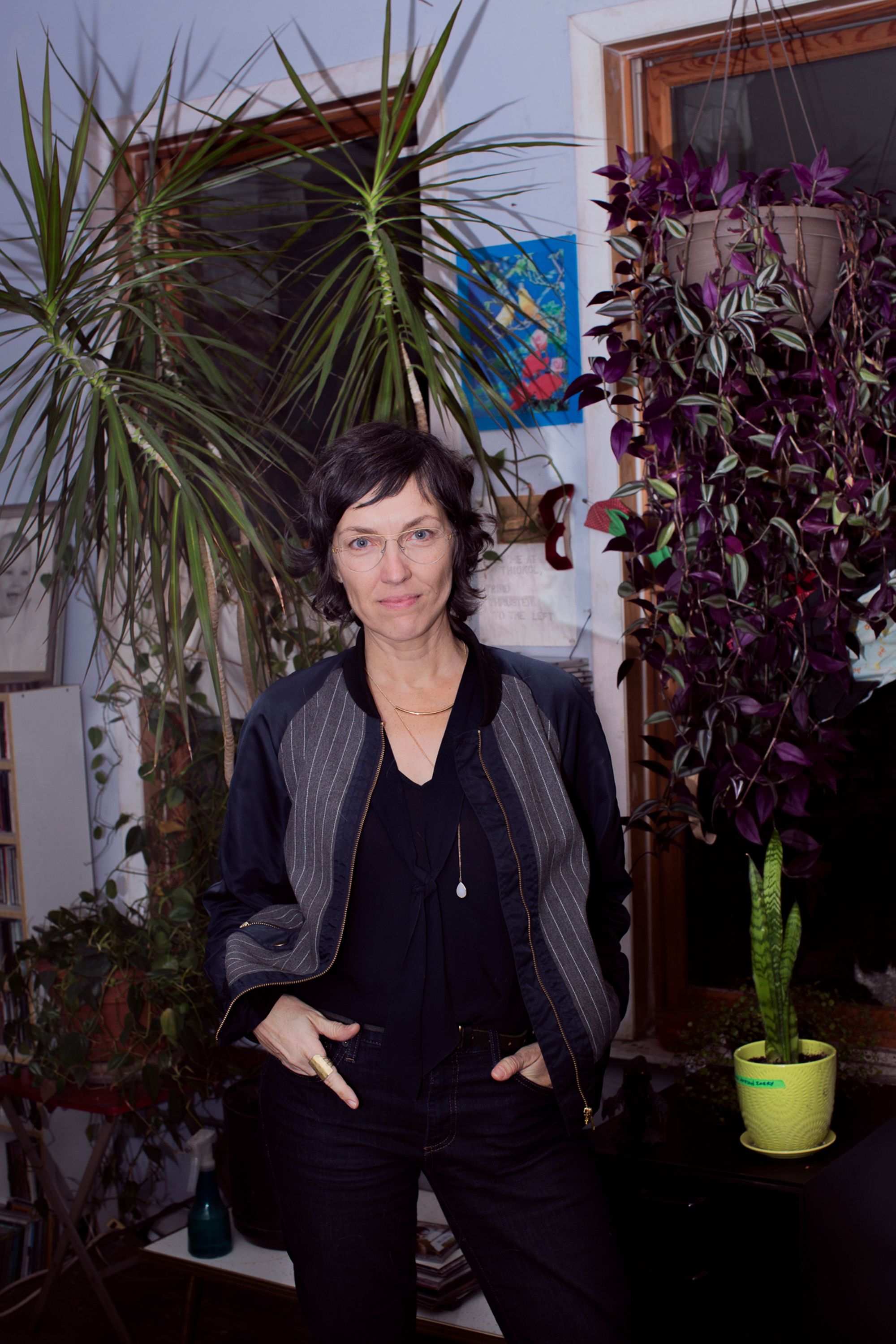Interview by Peter Margasak
Photos by Carly Ries
I grew up in the midwest, in Illinois. I was born in D.C., but I moved to Illinois when I was like a year and a half or two, and I grew up in the western suburbs—between Naperville and Aurora. I moved to Chicago in the mid-80s.
I went to CalArts for grad school. That was when I first left Chicago. I was there for three years, and then I moved to Iceland, where I lived for about a year and a half, working on From Hetty to Nancy. And that film was definitely a reaction to Los Angeles. Even just the desire to go to Iceland—I had to go someplace that really pushes against everything that LA is, as much as I love LA. I think the film I made in Iceland was definitely a product of the influence of the professors I worked with there. I mean Betzy Bromberg and Thom Anderson and James Benning.
And then after Iceland, that’s when I was based in Riga with Juris Poškus, a filmmaker I was partners with at the time. From there I lived in Copenhagen for a while, cutting the Iceland film. Then we were in Russia working on his film, so it was like Riga was a base we were coming back to, and then either going together or going separately to other places to work on stuff, and back to Riga and back to the States.
I’m definitely a curious lady, and that’s one of the things that I love the most. I think it’s art making in general, I don’t think it’s just film—that it gives you license to just drop into a field that you have no background in. Because you’re making this project about it, it gives you license to be, “Well, I’m making this project, so of course I can work with this geologist or this sound designer or whoever or whatever their field of expertise is.”
I understand how it’s related to journalism and/or ethnography, but to dip into other ways of being and thinking and living, it’s very seductive. Sometimes it’s confusing, like on films like The BLVD, where you surround yourself with this lifestyle. I get totally interested in it and get totally into the cars, and who are the people, and what are the conversations, and what’s the scene. But it doesn’t go both ways. I mean, they welcome you into their family, but it’s not like suddenly all those guys are coming over every weekend, hanging out and knowing what your life is outside of it—so it’s a bit of a strange negotiation.
Sometimes I think it’s really problematic and has a weird kind of privilege to it, to just come in and stamp a situation—or a culture, for that matter—with your take on it. Because that’s what you do; you’re coming in and you can’t help but be you. It’s not like I haven’t been completely doubt-addled about it.
Research drives the work, no matter what it is, and it can be on really different levels. Sometimes it’s research for a day and just being super curious about, “Wow, you have 72 birds of prey in your backyard? What? Can I film you?” It doesn’t have to be ten years of research, but just loving how weird people are, or how unusual certain architectures are. Or geothermal stuff is crazy.
 I’m easily excitable. I was back in Chicago, and I was antsy and I wanted to go somewhere. I had read somewhere that the most inland place in the world was right where the Uyghurs live, further from the ocean than anyone. And I thought, “That’s kind of cool. What happens there because of that and what kind of culture develops there?” And then learning that the Silk Road went through there, so it’s a huge trade route. There had always been Russia and China and the Middle East and this crazy confluence there—just deep, deep historical confluence of pretty different cultures rubbing up against each other. That seemed kind of curious, and it just made me want to read more about the area. It’s just random casting into all these different ponds. And I read something about their sports—there are two sports and they both sound awesome. One was tightrope walking, which is the Uyghur national sport. And the other was, they ride horses—it’s kind of like polo or lacrosse or something, but they’re on horses and they throw a sheep between them. And I was like, “Oh, that’s so cool. I could totally make a film about this.”
I’m easily excitable. I was back in Chicago, and I was antsy and I wanted to go somewhere. I had read somewhere that the most inland place in the world was right where the Uyghurs live, further from the ocean than anyone. And I thought, “That’s kind of cool. What happens there because of that and what kind of culture develops there?” And then learning that the Silk Road went through there, so it’s a huge trade route. There had always been Russia and China and the Middle East and this crazy confluence there—just deep, deep historical confluence of pretty different cultures rubbing up against each other. That seemed kind of curious, and it just made me want to read more about the area. It’s just random casting into all these different ponds. And I read something about their sports—there are two sports and they both sound awesome. One was tightrope walking, which is the Uyghur national sport. And the other was, they ride horses—it’s kind of like polo or lacrosse or something, but they’re on horses and they throw a sheep between them. And I was like, “Oh, that’s so cool. I could totally make a film about this.”
The place is the first interest, and that leads to an interest in the culture and the sociopolitical, and then it’s like, “What’s the hook, or what other thing can be enough of a thread to drape a film on?” And so I started reading about tightrope walking being their national sport. I was like, “That’s great—it’s really metaphorical, because these people are very oppressed.” Not that I didn’t have a panic attack on the plane—like, “Jesus, what the hell am I doing?”—but I still felt like, “Well, something will come out of it.”
Why am I going to China? I don’t speak Uyghur. I don’t know anything about their culture. This is so presumptuous of me. How am I going to be able to show this thing that’s so not me? But on the other hand, I feel like the gap between my reality and theirs is sort of what helps you see it—that’s actually what makes it fair and/or what gives you perspective. If the gap’s there between you and that thing, you can actually see the outline of it. I used to feel like it’s really important that I show somehow who I am—that I’m not a Uyghur or that I’m not a drag racer, I’m not a black person. But now I think my style says that enough that I don’t have to necessarily put myself in the film. Or I’m already showing my hand, just by how I choose to cut and how I choose to frame things, and hopefully people realize: “That’s not her realm, but she’s interested in it.” v

![[photo of latoya ruby frazier]](https://people.chicagoreader.com/wp-content/uploads/2016/12/Latoya_Ruby_Frazier_cropped-2-150x150.jpg)
![[photo of marshall brown]](https://people.chicagoreader.com/wp-content/uploads/2016/12/Marshall_Brown-IMG_3653-1-150x150.jpg)
